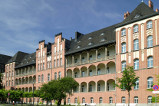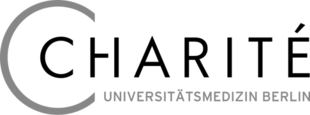1. Brief History
The Charité – Universitätsmedizin Berlin is Europe´s largest university clinic and the oldest and most prominent hospital in Berlin, Germany.
Complying with an order of King Frederick I of Prussia from November 14, 1709, the Charité was initially established in 1710 north of the Berlin city walls in anticipation of an outbreak of bubonic plague that already had depopulated East Prussia. After the plague spared the city it came to be used as a charity hospital for the poor. The construction of an anatomical theatre in 1713 marks the beginning of the medical school. 1795 saw the establishment of the Pépinière school for the education of military surgeons.
After the University of Berlin (today Humboldt University) had been founded in 1810, the dean of the medical college Christoph Wilhelm Hufeland in 1828 integrated the Charité as a teaching hospital. Rudolf Virchow, once student at the Pépinière, worked with anatomist Robert Froriep as prosector here and in 1856 became director of the newly created institute of pathology, where he developed his cell theory.
From 1946 – 1989, the Charité served as the most prestigious institute of the German Democratic Republic (GDR). In 1997/1998, the medical faculty of the Humboldt University merged with the Virchow-Klinikum of the Freie Universität Berlin to form the "Universitätsklinikum Charité, Medizinische Fakultät der Humboldt-Universität zu Berlin".
Acting today as the medical school for both the Humboldt University and Freie Universität Berlin, Charité – Universitätsmedizin Berlin is one of the largest university hospitals in Europe.
Nobel Prize Laureates include:
More than half of the German Nobel Prize winners in medicine and physiology come from the Charité:
- Emil Adolf von Behring – physiologist (Nobel Prize in Physiology or Medicine in 1901)
- Ernst Boris Chain – biochemist (Nobel Prize in Physiology or Medicine in 1945)
- Paul Ehrlich – immunologist (Nobel Prize in Physiology or Medicine in 1908)
- Hermann Emil Fischer – chemist (Nobel Prize in Chemistry in 1902)
- Werner Forssmann – physician (Nobel Prize in Physiology or Medicine in 1956)
- Robert Koch – physician (Nobel Prize in Physiology or Medicine in 1905)
- Albrecht Kossel – physician (Nobel Prize in Physiology or Medicine in 1910)
- Sir Hans Adolf Krebs – physician and biochemist (Nobel Prize in Physiology or Medicine in 1953)
- Fritz Albert Lipmann – biochemist (Nobel Prize in Physiology or Medicine in 1953)
- Hans Spemann – embryologist (Nobel Prize in Physiology or Medicine in 1935)
- Otto Heinrich Warburg – physiologist (Nobel Prize in Physiology or Medicine in 1931)

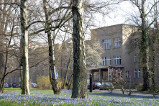
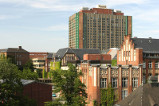
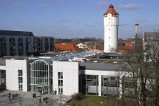
2. Key Facts
Established:
1710
Type:
Public
Structure:
The Charité has four different campuses in total:
- Campus Mitte (CCM) in Berlin-Mitte
- Campus Benjamin Franklin (CBF) in Berlin-Lichterfelde (formerly "Klinikum Steglitz")
- Campus Virchow Klinikum (CVK) in Berlin-Wedding
- Campus Berlin Buch (CBB) in Berlin-Buch
Organized in 17 different departments, which call themselves "Charité centers", the Charité encompasses more than 100 clinics and scientific institutes:
CC 1: Health and Human Sciences
CC 2: Basic Sciences (First Year)
CC 3: Dental, Oral and Maxillary Medicine
CC 4: Therapy and Research
CC 5: Diagnostic Laboratory and Preventative Medicine
CC 6: Diagnostic and Interventional Radiology and Nuclear Medicine
CC 7: Anesthesiology, Opeating-Room Management and Intensive Care Medicine
CC 8: Surgery
CC 9: Traumatology and Reconstructive Medicine
CC 10: Charité Comprehensive Cancer Center
CC 11: Cardiovascular Diseases
CC 12: Internal Medicine and Dermatology
CC 13: Internal Medicine, Gastroenterology and Nephrology
CC 14: Tumor Medicine
CC 15: Neurology, Neurosurgery, Psychiatry
CC 16: Audiology/Phoniatrics, Ophthalmology and Otolaryngology
CC 17: Gynecology, Perinatal, Pediatric and Adolescent Medicine with Perinatal Center & Human Genetics
Staff:
13,200 Employees, including 3,700 Doctors and Scientists
Students:
7,000
Endowment:
1.3 billion euros in sales per year
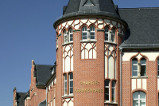


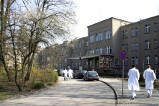
3. Research
Focus / Key Aspects:
13 of the 17 different departments centers focuses on patient care while the rest focuses on research and teaching.
In six selected areas, the Charité is striving for a top position in the national and international research rankings, thus focusing on the following areas of research:
- Immunological sciences
- Cardiovascular research and metabolism
- Neurosciences
- Oncology
- Regenerative Therapies
- Rare diseases and genetics
Spin-offs:
- Ambulantes Gesundheitszentrum der Charité GmbH
- Berlin Institute of Health (BIH)
- Charité CFM Facility Management GmbH
- Charité Healthcare Services (CHS)
- Charité Physiotherapie und Präventionszentrum GmbH
- Charité Research Organisation (CRO)
- Evangelisches Geriatriezentrum GmbH (EGZB)
- Labor Berlin - Charité Vivantes GmbH
- Medizinisches Versorgungszentrum der Charité Mitte GmbH
- ZTB Zentrum für Transfusionsmedizin und Zelltherapie Berlin gGmbH
- undefinedCharité International Academy (ChIA)
4. Partnerships and Programs
Partner Universities:
- Tongji Medical College Wuhan (China)
- Zheijiang Association of Science and Technology, Hangzhou (China)
- Instituto Superior de Ciencias Medicas de La Habana (Cuba)
- Saitama Medical School (Japan)
- Medizinische Burdenko-Akademie, Voronezh (Russia)
- Gachon Medical University, Incheon (South Korea)
- Johns Hopkins University School of Medicine, Baltimore (USA)
- Northwestern University Feinberg School of Medicine, Chicago (USA)
Student Programs:
The Charité maintains an extensive network of cooperations, especially within the framework of the European ERASMUS program and at a bilateral level. Additional programs include:
- ERASMUS
- Alumni-Club der Charité (ACDC)
- Students from international partner universities are welcome at the Charité to do any part of their study program
- International Summer Schools
Affiliations:
- Freie Universität Berlin
- Humboldt University of Berlin
5. Trivia
Motto:
Research, Teaching, Healing, Helping
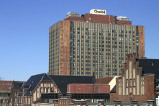
Miscellaneous:
On January 9, 1727 Frederick William I of Prussia gave it the name Charité, meaning "charity".
6. Useful Links
